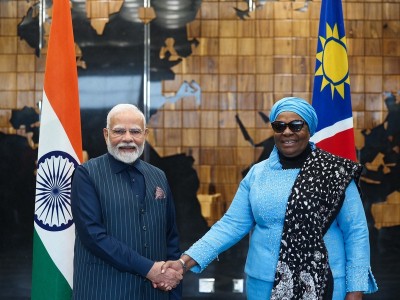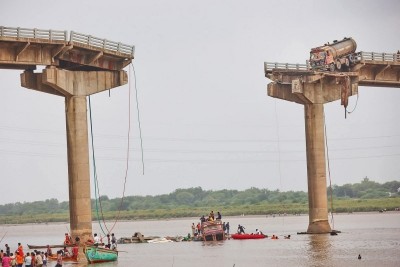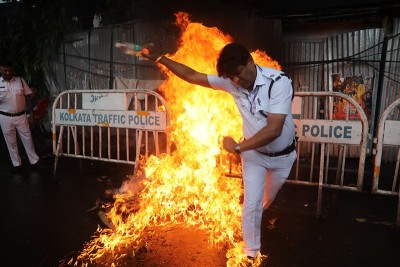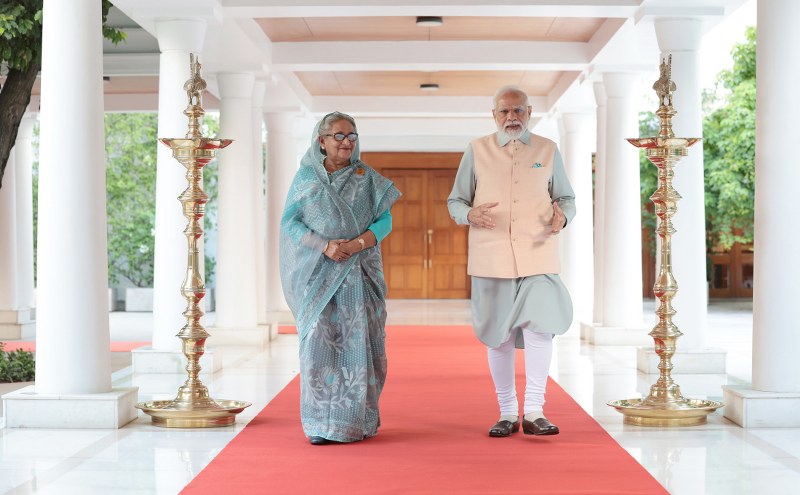 Bilateral Ties
Bilateral Ties
Time for India and Bangladesh to enter into a comprehensive partnership
The 11th Bangladesh-India Friendship Dialogue at Sylhet (Bangladesh) concluded that the two countries should move towards a comprehensive partnership to consolidate gains from their half-a-century-old friendly relations.
Organised jointly by the Bangladesh Foundation for Regional Studies and India Foundation from New Delhi; the three-day (October 5-7, 2023) dialogue was inaugurated by the Speaker of Bangladeshi Parliament and was attended by a galaxy of ministers, Parliament members and intelligentsia from either side.
With the World Trade Organisation (WTO)-sponsored liberalized trade regime (characterized by non-preferential tariff) facing an existential crisis (as all large countries are taking recourse to tariff war); the world is moving towards a preferential tariff-based trade through bilateral or multilateral arrangements.
India has upped the game by laying priority on comprehensive economic partnership agreements (CEPA). One such recent agreement between India and the United Arab Emirates (UAE), resulted in a 20 percent growth in bilateral trade.
Entering a CEPA with the world’s fastest-growing major economy, ranked fifth in terms of gross domestic product (GDP), is in Bangladesh’s interest. However, the Sheikh Hasina government in Dhaka looks way beyond that. Hasina is credited with increasing Bangladesh’s GDP by more than five times during her 15-year uninterrupted rule since 2008.
The period saw Bangladesh paying unprecedented attention to infrastructure creation and connectivity - epitomized by the completion of the Padma bridge – not merely within Bangladesh but also between India and Bangladesh.
During the period, the two countries also resolved their historical border disputes both on land and the sea. Finalizing the maritime boundary will help Bangladesh attract investments in the blue economy. Coastal shipping is established. Cross-country passenger train and bus movement increased manifold.
The wait is now for the Kolkata-Dhaka container train service, which will be a reality as soon as the railway component of Padma Bridge is completed. People-to-people movement between the two nations increased by more than double.
From roughly 9 lakh visas issued to Bangladeshis annually in 2014, India now issues over 20 lakh visas. The Indian visa operation in Bangladesh is the largest for any country around the globe.
The period coincided with dramatic improvements in both hard and soft infrastructure in India. From the 10th largest economy in 2014, India is now ranked fifth and will soon become the third largest economy after the USA and China. It was a superpower in the IT and pharmaceutical sectors.
Over the last 10 years, India has become a top player in the world in areas like digital services, solar power, telecom, space technology etc. In space, it is the fourth country to successfully land on the moon. From largely a services-oriented economy, India is emerging as a manufacturing giant as well. Mobile phones, military hardware etc are the fastest-growing export items of the country.
The prudent mix of services and manufacturing is making India distinctly stronger. Add to that its robust financial market and India is living the goal to be a developed economy in 2047.
That suits Sheikh Hasina’s dream as well. She wants to see Bangladesh in the league of the most prosperous nations. The shared dream needs shared growth. A comprehensive cooperation should trigger the next level of trade and investments between the two nations.
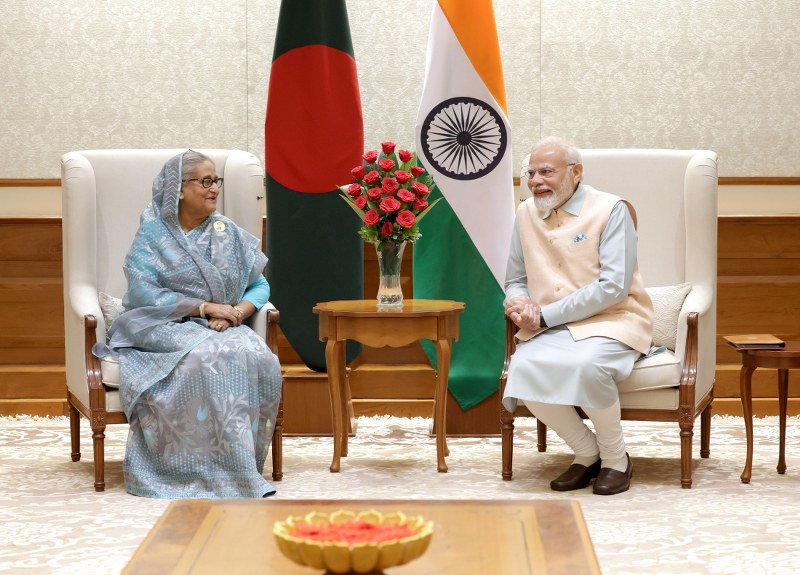 Sheikh Hasina (L) and Narendra Modi (R) during a bilateral meeting in September 2023 | Photo courtesy: PIB
Sheikh Hasina (L) and Narendra Modi (R) during a bilateral meeting in September 2023 | Photo courtesy: PIB
The two countries have already established cross-country electricity grids and refined petroleum pipelines. In the days to come, Bangladesh may gain from India’s rapid strides to be a green hydrogen production hub.
The proposed India-Middle East Economic Corridor (IMEC) coupled with the already functional International North-South Transport Corridor (INSTC) between India and Russia; should give Bangladesh a huge head start in accessing markets between the Caspian and the Mediterranean seas and in the West at a lower cost.
India, along with other development partners, is pursuing a bigger transnational connectivity link than the Belt and Road (BRI) of China. However, unlike BRI, the Indian model would not inundate the participating countries in financial misery through a massive loan burden. Bangladesh is rightly poised to take full advantage of the emerging scenario.
Dhaka is surely keen to widen the scope of cooperation. At the 11th Friendship Dialogue, Bangladesh foreign minister, Dr A K Abdul Momen, invited greater focus on bilateral trade, improved connectivity, cooperation in energy and water, and strengthening people-to-people connectivity. Bangladesh urged India to enhance visa approvals from 9000 a day.
Delhi is requested to start the Guwahati-Sylhet-Dhaka flight. Bangladesh promised the commencement of the Dhaka-Guwahati air link.
Dr Momen proposed a visa-free regime between the two nations. This is surely doable provided the two countries agree to work on a common code, as in the Schengen Zone in Europe. A common code may also help the two countries in making financial transactions easier and faster.
There can be a common electricity grid, similar to India-Bhutan. India has already offered a rupee-trade window to Bangladesh to help Dhaka reduce its demand for the US dollar. In the days to come, a convertible or partly-convertible Indian rupee might replace the dollar trade altogether between the two countries.
Bangladesh has disproved the religion-based Two Nation Theory behind the Partition of India in 1947. Its independence from Pakistan in 1971 and the peaceful coexistence with India for over 50 years have little parallel across the world.
The visionary leadership of Sheikh Hasina in strengthening regional cooperation helped South Asia neutralise much of the toxicity emanating from Pakistan. A comprehensive cooperation between India and Bangladesh can be a model for the entire world to pursue growth and prosperity.
Support Our Journalism
We cannot do without you.. your contribution supports unbiased journalism
IBNS is not driven by any ism- not wokeism, not racism, not skewed secularism, not hyper right-wing or left liberal ideals, nor by any hardline religious beliefs or hyper nationalism. We want to serve you good old objective news, as they are. We do not judge or preach. We let people decide for themselves. We only try to present factual and well-sourced news.





